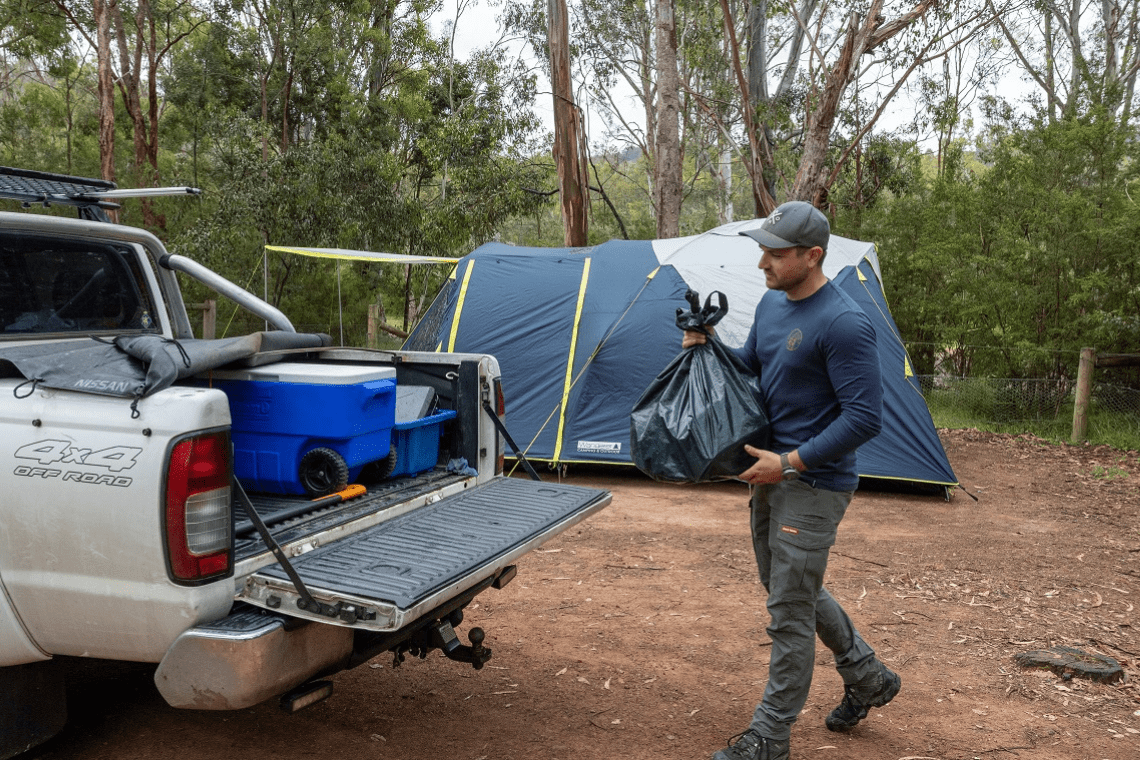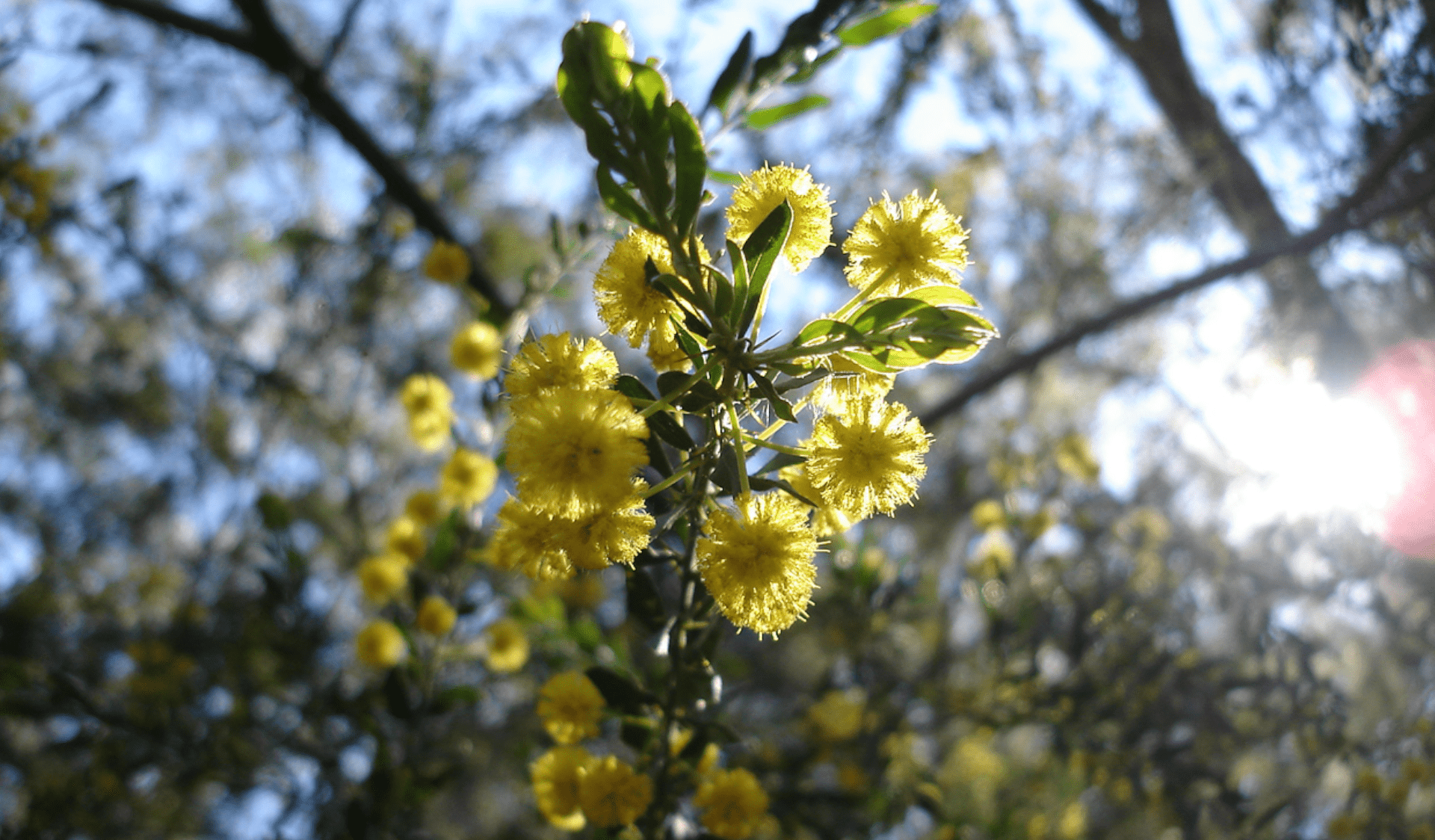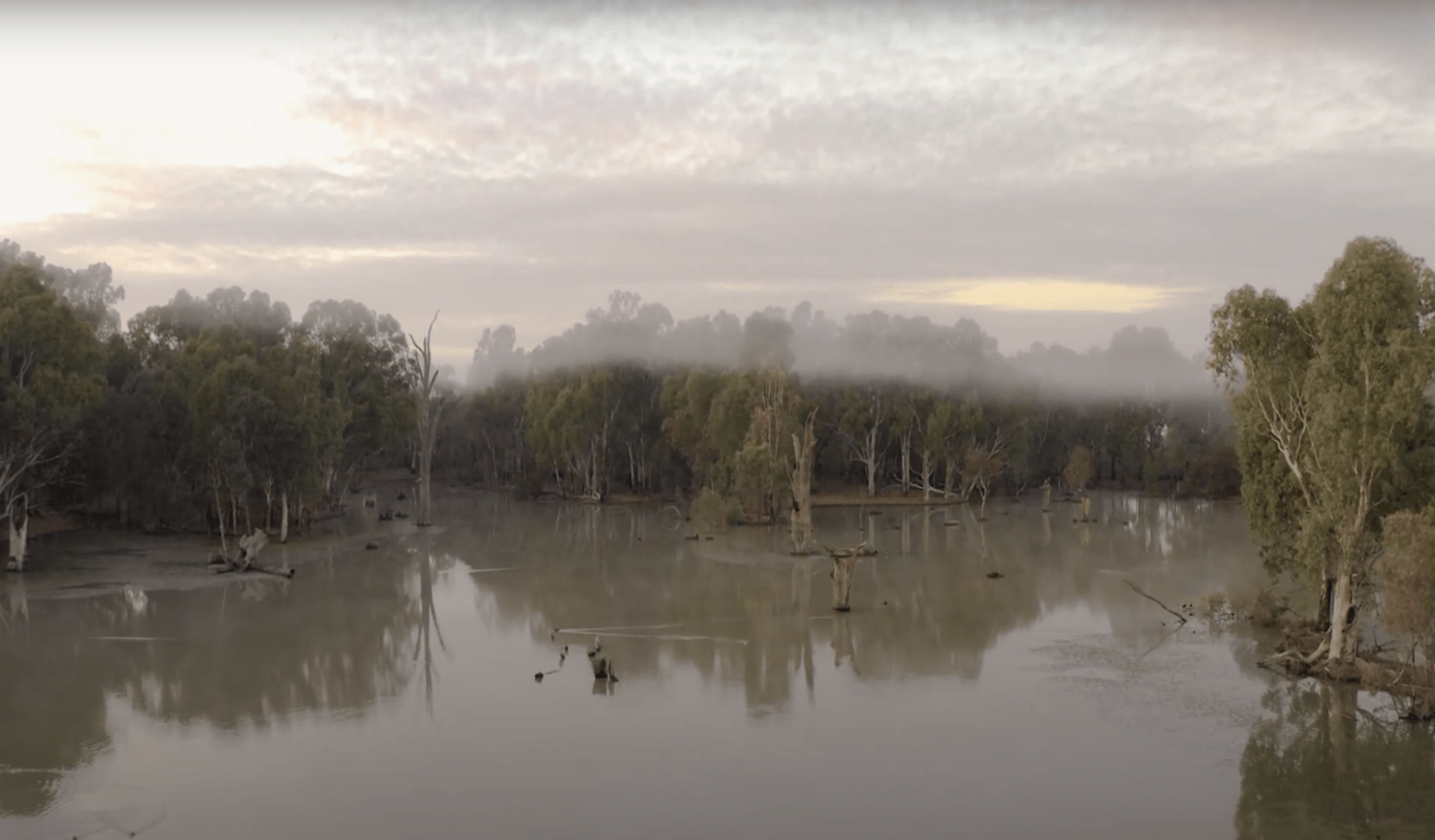How people power is helping the humble Hooded Plover
Friday 8 March, 2024
Key Points:
- Each summer dedicated volunteers keep a watchful eye on nesting Hooded Plovers and their chicks right along Victoria’s coastline.
- Hooded Plovers are listed as a vulnerable species, around 700 individuals are left in Victoria.
- Parks Victoria works with volunteer groups and other organisations to increase the survival of Hooded Plover chicks.
- Beach-goers can assist by keeping well clear of nests, walking along the waterline, and keeping dogs on a leash where signposted.
There are few birds which have created as much outpouring of community support as the determined, yet vulnerable, Hooded Plover.
These plucky little beach birds have the survival odds stacked against them from the very beginning, but with the help of dedicated volunteer groups along Victoria’s coastline, there’s hope for the Hooded Plover yet.
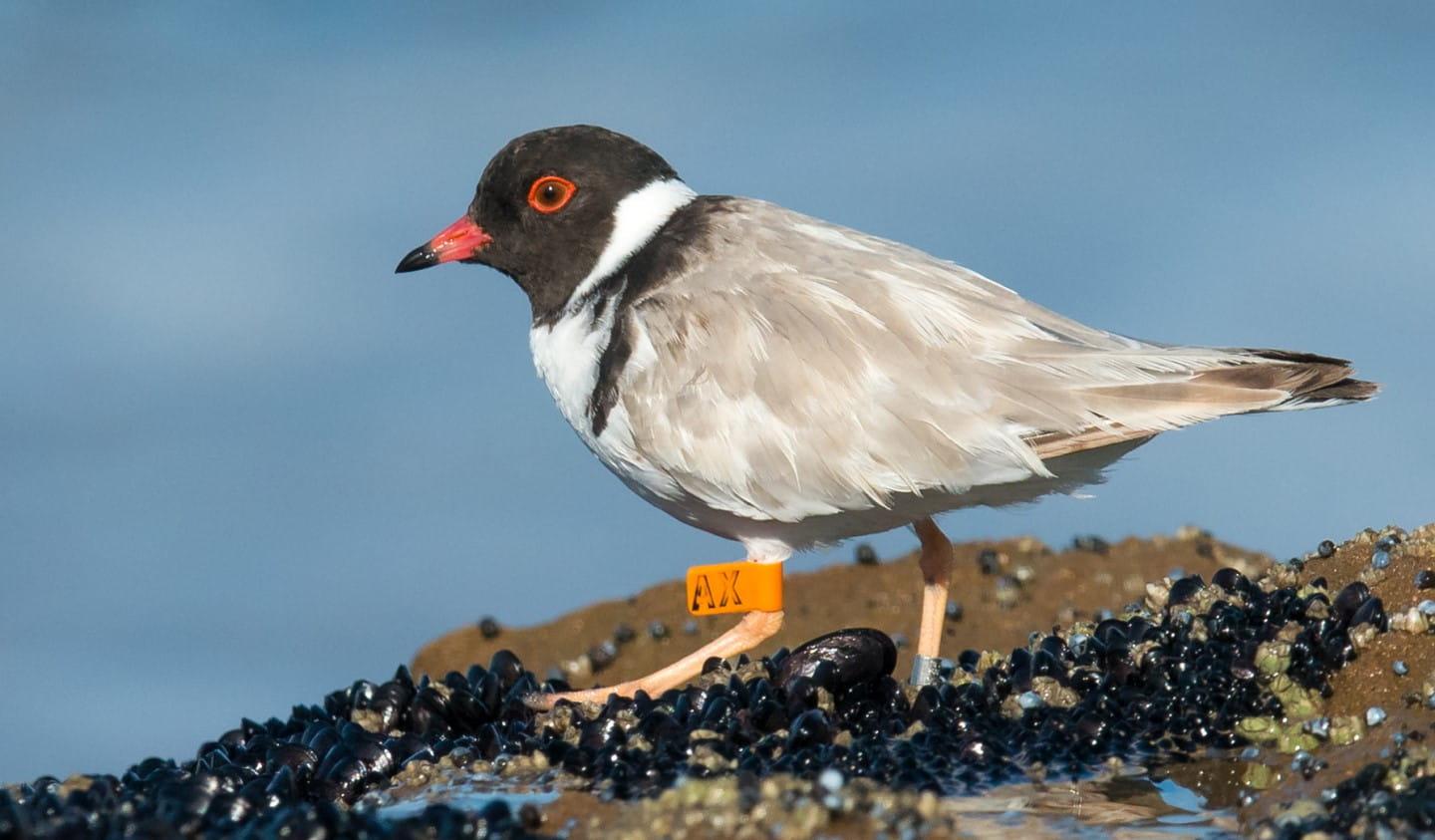
Photo: The Hooded Plover is an endangered beach-nesting bird found right along Victoria's coastline. Photo credit: Mark Lethlean.
Armed with signs, stakes and rope, volunteer members of the Friends of Hooded Plover groups, along with land managers like Parks Victoria mark out areas where ‘hoodies’ are found to be nesting.
Mark Lethlean, the President of the Friends of the Hooded Plover Mornington Peninsula volunteer group, said summer was always the most challenging time of year - not only are the plovers nesting and raising their young, but beaches are at their busiest.
“We know that as soon as a chick has fledged, it’s survival rate skyrockets,” Mark said.
“However, that’s the part of the problem when volunteering with the hoodies - it’s so easy to get excited when there’s a new chick, but in all likelihood, the mortality rate is so high, that when I go to check on them, I’m not expecting them to still be there.”
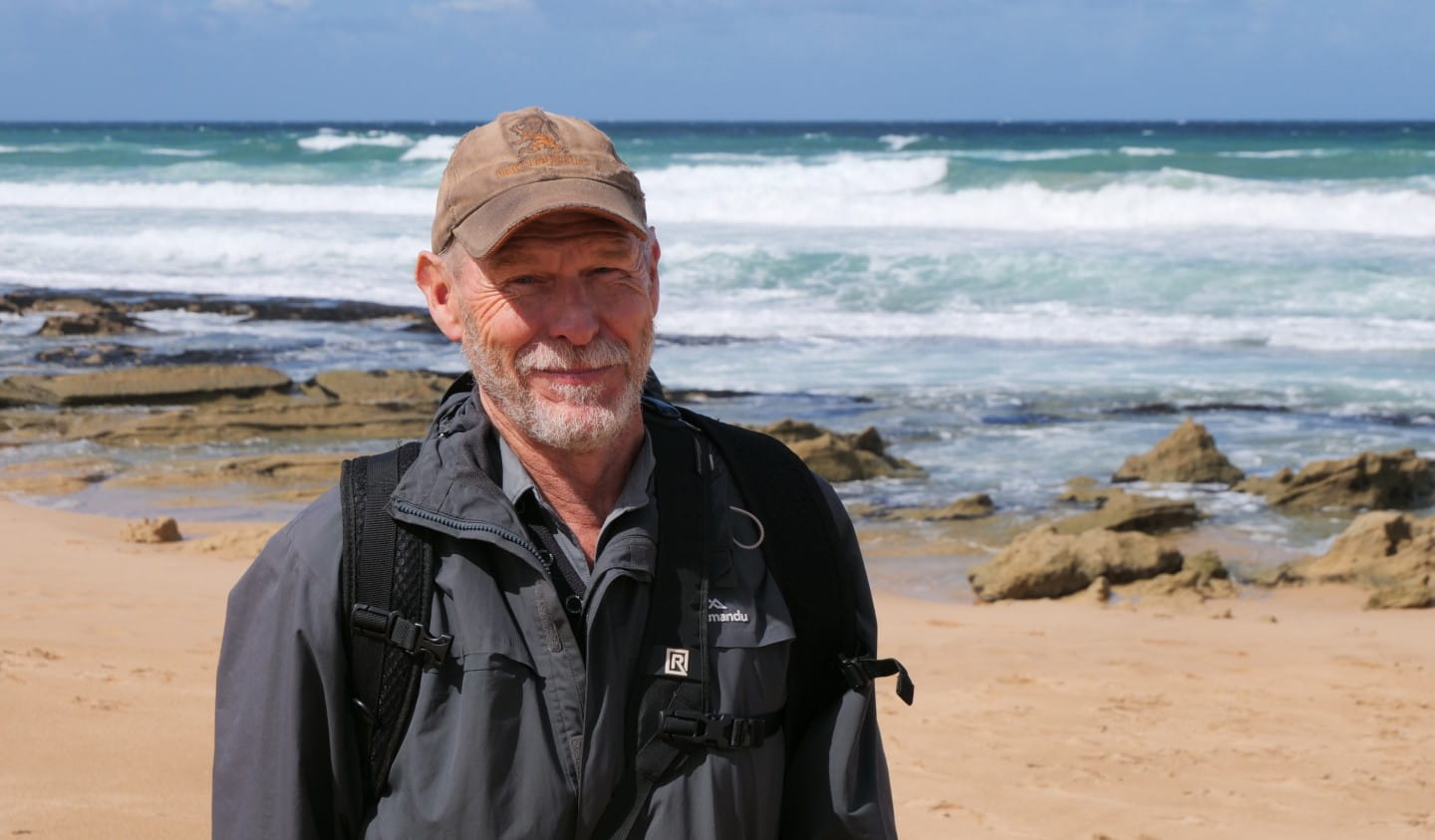
Mark Lethlean is president of the Friends of Hooded Plover Mornington Peninsula volunteer group.
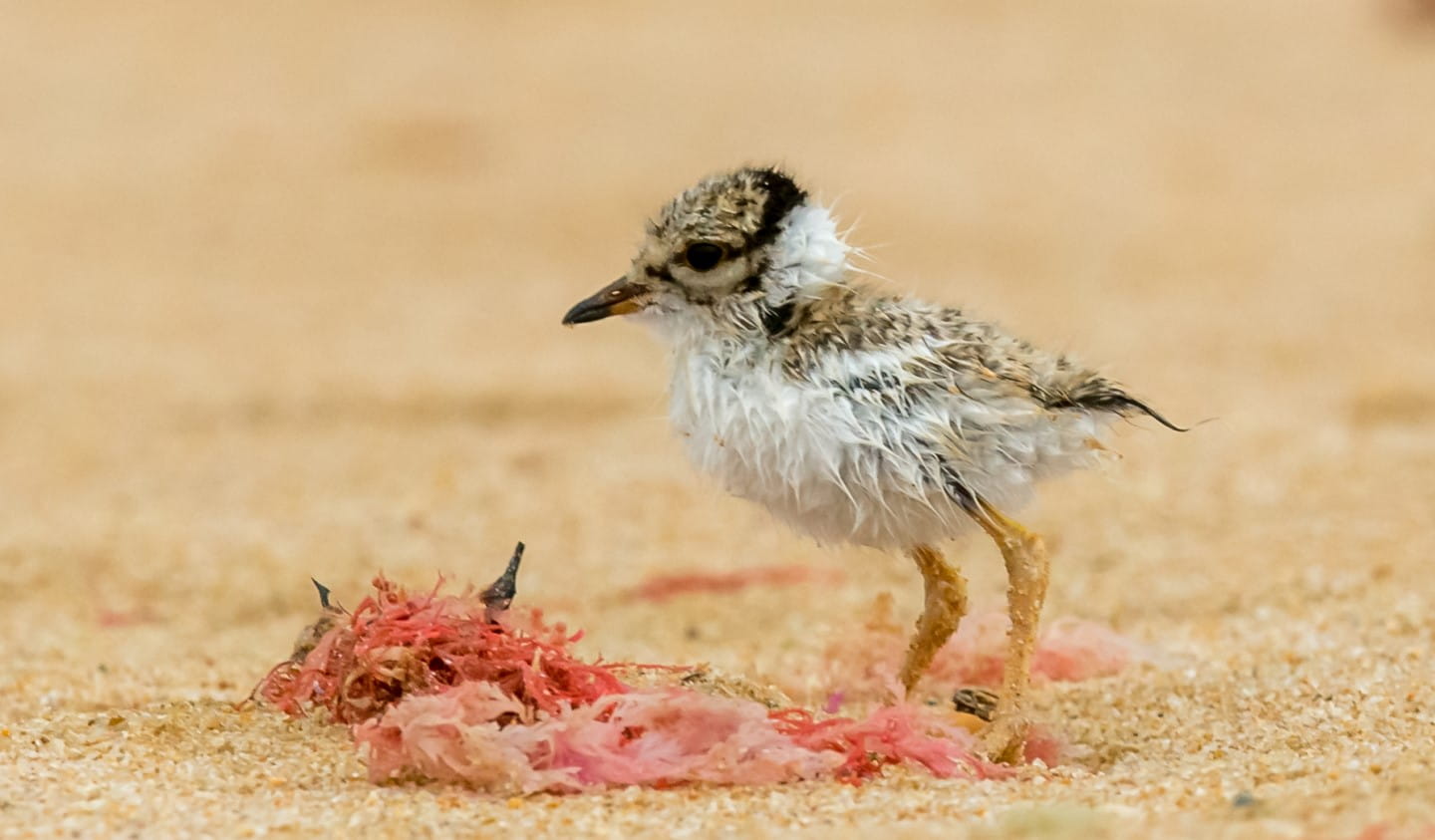
Hooded Plover chicks are extremely vulnerable until they are able to fly, a process which take approximately 35 days after hatching. Photo credit: Mark Lethlean
The Hooded Plover is one of just five beach-nesting birds in Australia (the others being the Pied and Sooty Oystercatchers, the Beach Stone Curlew, and the Red-capped Plover), however it is the only one listed as vulnerable.
This is due to many factors.
Hooded Plovers spend their whole lives on the beach, between the dunes and shoreline. They lay their sand-coloured eggs in shallow scrapes near the high-water mark. Unfortunately, this means they are easily stepped on and are susceptible to being washed away on particularly high tides.
Chicks that do hatch are extremely vulnerable for the first five weeks until they’re able to fly and defend themselves. During this time, the parents will keep a careful eye over the chicks and will fiercely try to protect them from predators, like foxes, cats, ravens, and gulls.
Sadly, humans also present a threat to the Hooded Plover.
Dogs running off-lead have been known to attack and kill adult birds and their chicks. Hooded Plover parents may also perceive people as threats and try to lead them away from their nest with elaborate broken-wing displays, but in doing so, leave chicks open to attack from other predators.
“The best thing people can do is follow the signs, stay away from the chicks, and keep their dogs on a lead,” Mark said.
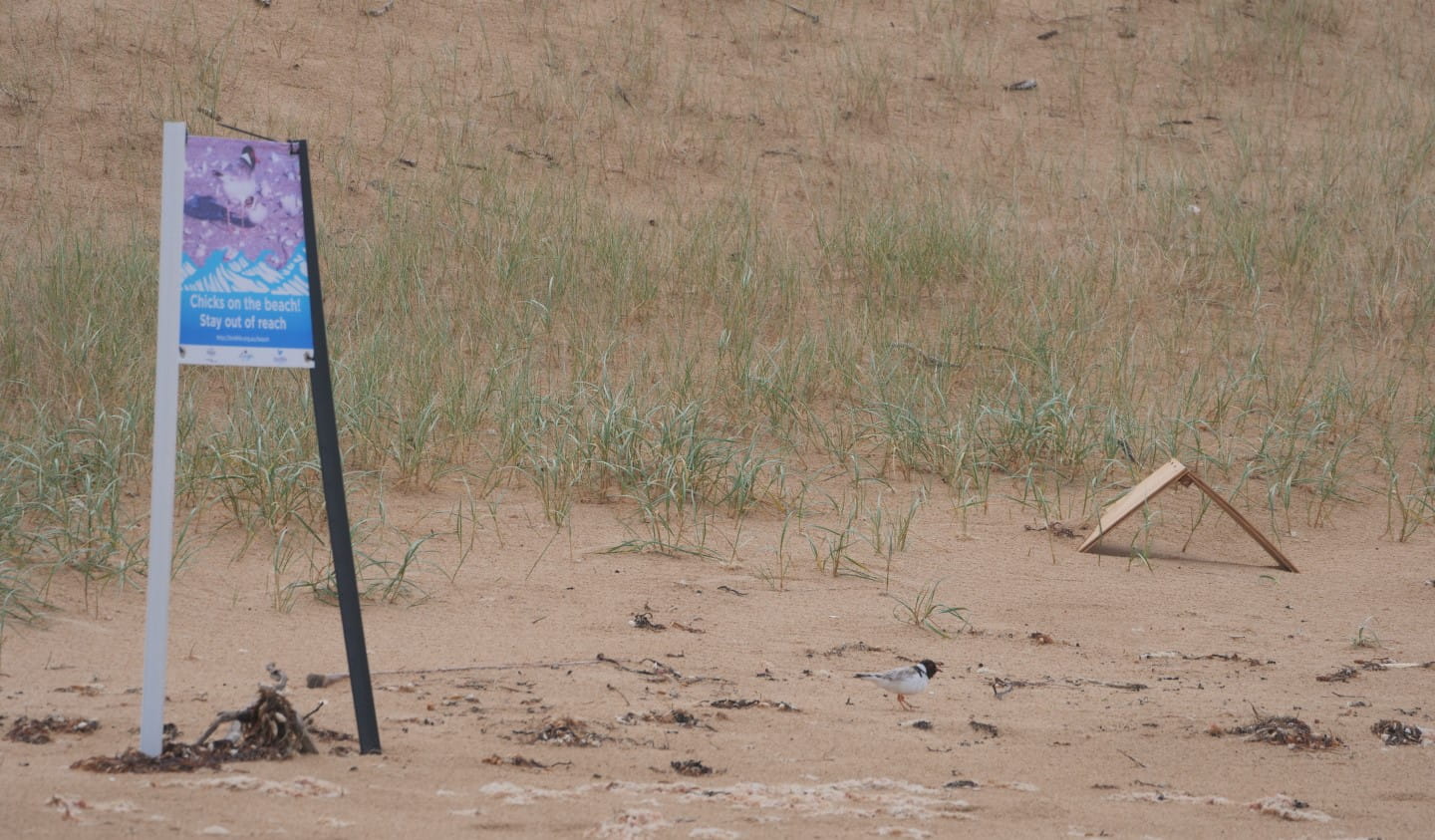
Photo: When a nest is discovered, Friends of Hooded Plover volunteer groups may rope off areas of the beach, put up warning signs and provide shelters for the birds to use.
The Mornington Peninsula National Park hosts one of the largest concentrations of Hooded Plovers in the state, making it incredibly important for their survival.
“The birds love this area, it’s got high impact beaches, lots of food, rocky shelves, everything they want,” Mark said.
“We have 30 breeding pairs across 30 distinct territories, and for us, a good season for a viable population is one fledgling from every second territory. However, some pairs may make five or six nests during a season and lay 12-15 eggs in that time, but still not be able to successfully raise a fledgling. If a nest fails, they start cycling again. The more nests they’ve had suggests the more nests they’ve had fail.”
“This year we’ve already had five fledglings, so I’d say we’d be very unlucky to not get any more before the season ends.”
Data from BirdLife Australia shows approximately 764 eggs were laid along Victoria’s coastline during the 2022-23 summer, but the combination of human impacts, predators, and harsh environmental factors meant only a quarter of those eggs hatched, and only 43 chicks survived to become juveniles.
The Mornington Peninsula volunteer group is just one of several Friends of Hooded Plover groups spread across Victoria’s coast, each looking after a patch where the plovers are known to nest.
These volunteer groups, together with Parks Victoria and organisations like the Great Ocean Road Coast and Parks Authority, the Conservation Regulator, and BirdLife Australia, are spreading awareness of the plight of the Hooded Plover and taking steps to protect them from introduced threats.
These efforts are having a real impact. BirdLife Australia data has shown that volunteer-protected nesting sites have a much higher chance of producing successful chicks than without intervention. However, just like the Hooded Plovers’ plans for survival, things don’t always go to plan for the volunteers either.
With a vast amount of coastline to cover, and only so many volunteer members, the Friends of Hooded Plover Surf Coast group found themselves stretched extra thin this year when one of the Surf Coast’s seven pairs of Hooded Plovers began nesting on the main beach in Lorne for the first time in recorded history.
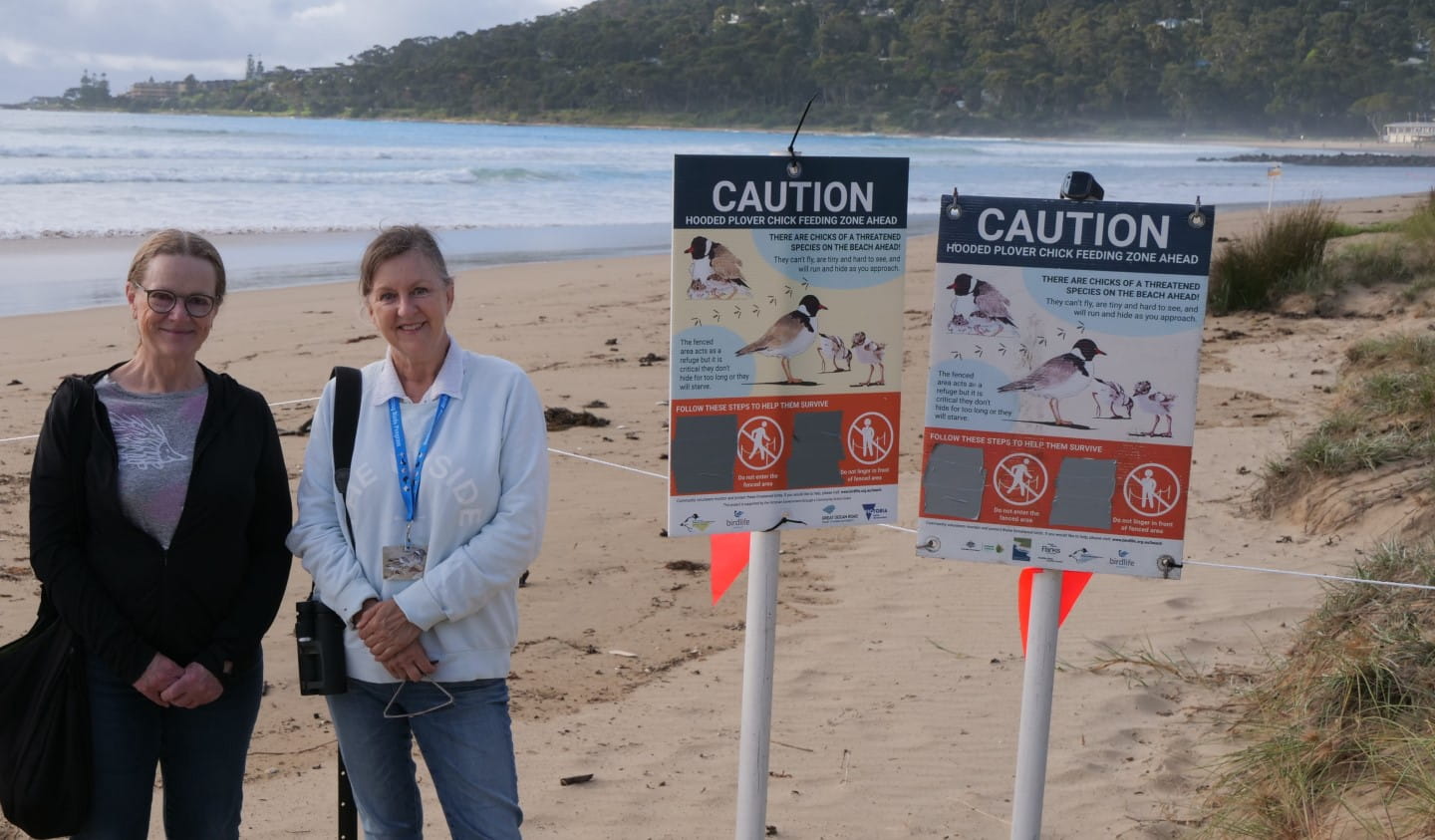
Friends of Hooded Plover Surf Coast volunteer members Bron Ives and Amanda Place watching over the Hooded Plover chicks at Lorne's main beach.
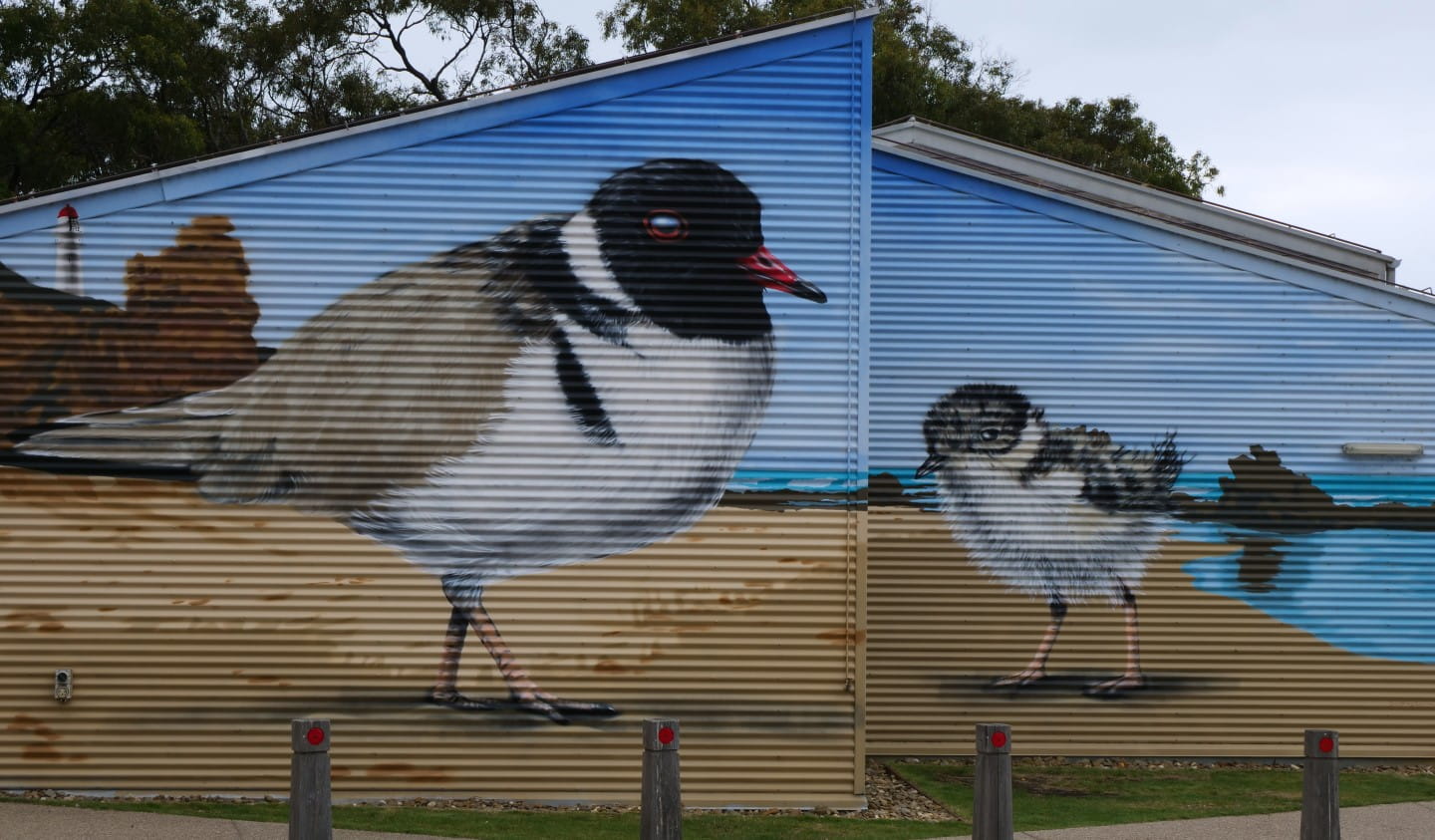
The Hooded Plover mural on the Aireys Inlet Community Centre helps raise awareness of the endangered bird along Victoria's Surf Coast.
Friends of Hooded Plover Surf Coast member Bron Ives said the birds “couldn’t have picked a worse time if they tried.”
“The nest was found just before Christmas and they hatched just after New Year’s when the beach was at its busiest,” Bron said.
“We didn’t have many volunteers from Lorne, so we put posters up in town for anyone who was interested in helping. There was a huge amount of interest in the plovers, and people were more than happy to lend a hand.”
“People understand we need to learn to share the beach. This is our playground, but it’s their home,” she said.
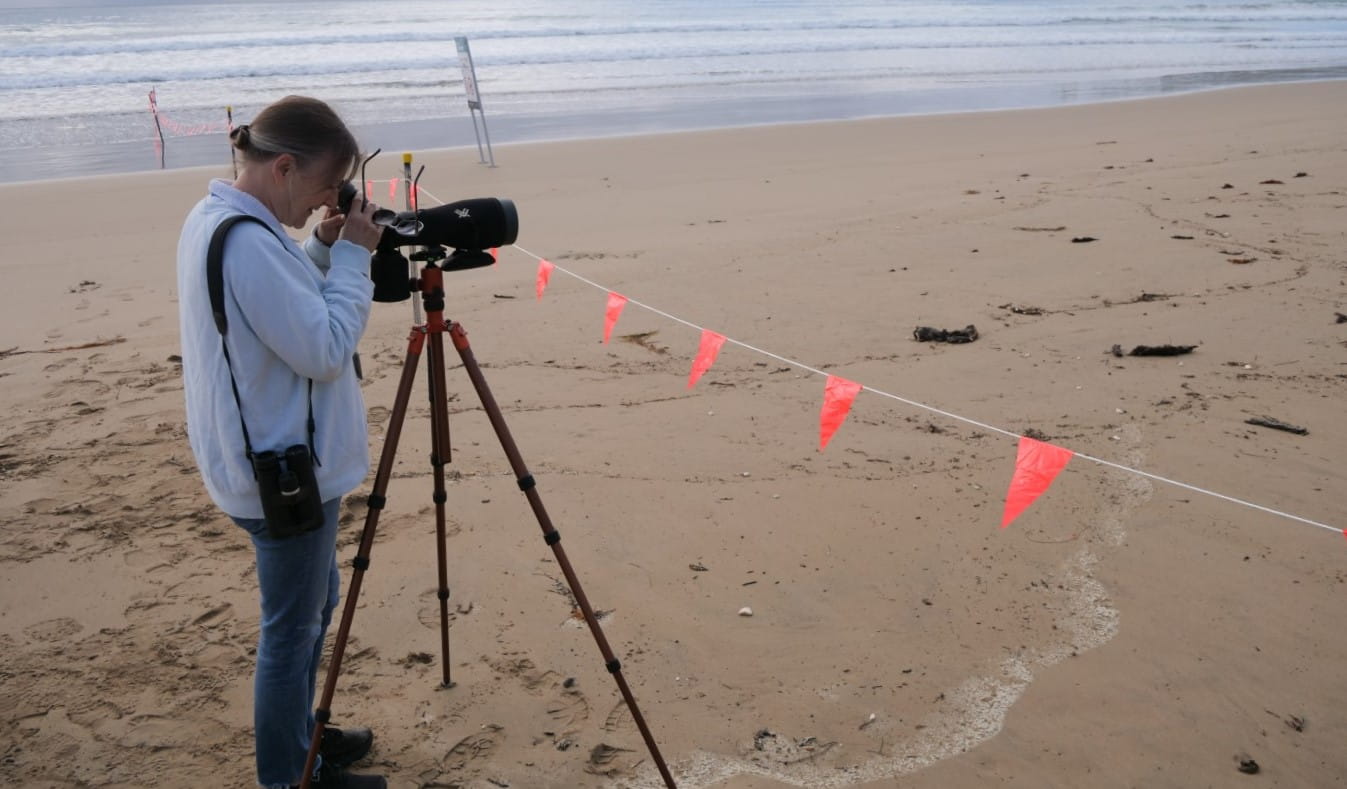
Lorne resident Amanda Place said she enjoyed learning more about the different behaviours of the Hooded Plovers at her local beach.
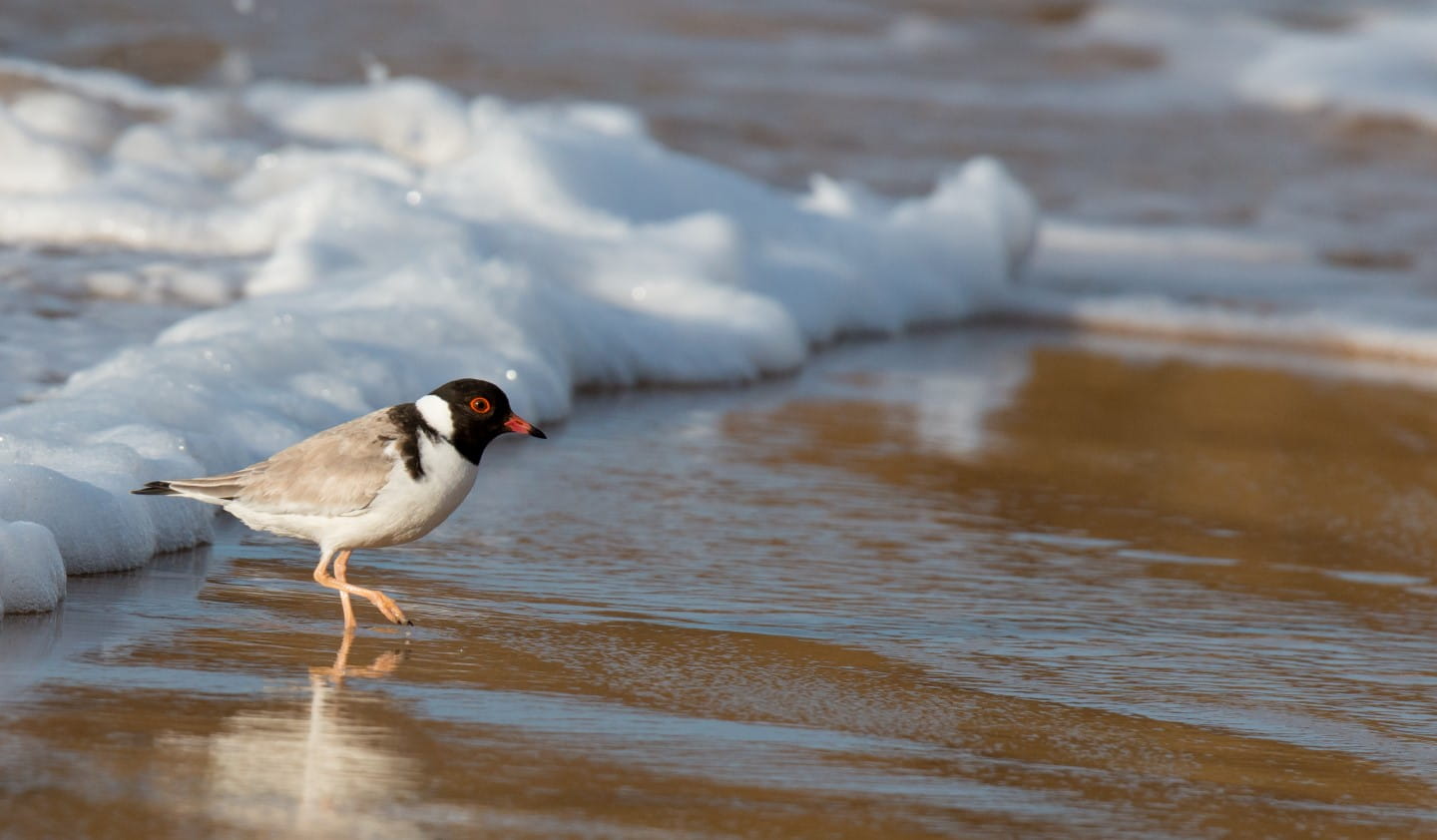
Hooded Plovers are endangered and spend their entire lives on the beach between the shoreline and the dunes. Photo credit: Mark Lethlean.
Amanda Place is one of the Lorne locals who volunteered to warden over the chicks until they fledged.
“There was a bit of resistance to close the beach at the beginning, but after a week everybody was on board, and now these little chicks are celebrities,” she said.
“I’ve been amazed at the power these little birds have had on building community spirit. Summer is always the busiest time here, so it can be very stressful for locals, but these little chicks have really brought everyone together.”
Happily, in late February the Friends of Hooded Plover Surf Coast announced both Lorne chicks successfully fledged, proving people power protects precious plovers.
Volunteering in nature is a great way to help conserve Victoria’s special places. There are hundreds of exciting volunteer opportunities across Victoria, regardless of your age, skill or ability. Click here to find out how you can volunteer in a park near you.


